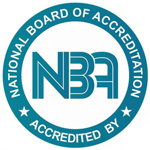Coronavirus disease 2019 (COVID-19) poses an occupational health risk to healthcare workers.[1] Several thousand healthcare workers have already been infected, mainly in China. Preventing intra-hospital transmission of the communicable disease is therefore a priority.[1] The principle of zero occupational infection remains an achievable goal that all healthcare systems need to strive for in the face of a potential pandemic.[1] Unlike for influenza, no vaccine or antiviral agents are available for COVID-19, and the mainstay of treatment is supportive care, in high dependency units if necessary, for the most critically ill patients. Experience with SARS and the 2009 influenza pandemic showed that containment can buy us some time, and it has done so with COVID-19. But containment in the face of a pandemic will go only so far, and we must use this time wisely. We need to start planning for an escalation in our response to new coronavirus infections and a surge in demand across the health and social care sector; the expectation must be that our unscheduled care services, will be severely challenged even by a modest increase in cases. Being on the frontline providing medical treatment to coronavirus patients, doctors and healthcare personnel are the most susceptible of getting infected. This unfortunate state of events which is a big reality recently had come to fore at the renowned WOCKHARDT Hospital wherein 3 doctors and 26 nurses have been reported to have contracted the virus. Further, in a bid to prevent the spread of the infection, the Brihanmumbai Municipal Corporation (BMC) has declared the hospital as the containment zone and the facility has been sealed once all the other present there, test for the virus. As the infection happened from the non COVID area and the healthcare providers were not provided with enough personal protective equipment, the infection spread rapidly among the healthcare workers. The reported symptoms include fever, cough, pneumonia, headache, diarrhea and dyspnea. The preventive measures such as masks, hand hygiene practices, avoidance of the public contact and quarantine are being recommended for reducing the transmission. Preparation has been challenged by rapidly changing guidelines, inconsistent directives, and a lack of testing capability. This paper will discuss about the strategies and protocols for managing the disease while minimizing impact on hospital staff and patients there by focusing on infection control, conserving workforce resources and supplies, educating the teams, and coordinating with public health authorities.

Explore 5 Top Career Paths in Hospital Management at IIHMR Bangalore
Introduction: The healthcare industry is booming, and with it, the demand for skilled hospital management professionals is soaring. As one of the premier institutions in








